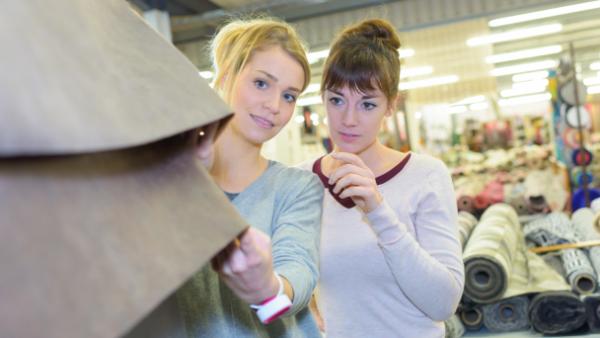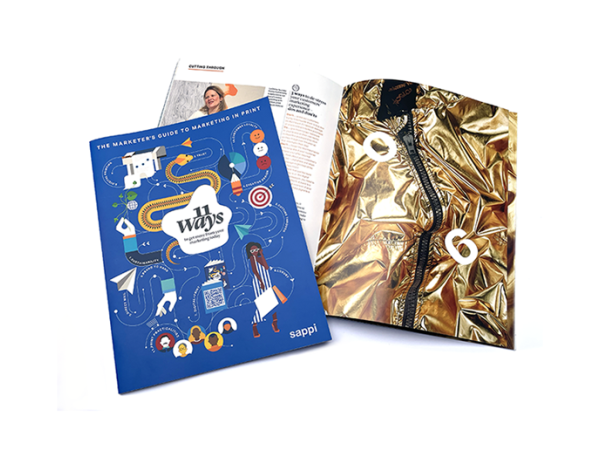How Can Brands Harness the Power of Touch and Increase Sales?
Want to make your customers buy something? Let them touch it. Joann Peck explores the world of conversion psychology, and what this latest weapon in the marketeer’s arsenal means for consumers

The secret psychologies that make us buy
The importance of touch should not be underestimated. ‘Keep in touch’ and ‘on the other hand’ are two of the many phrases that reflect its historical primacy. In marketing, touch has numerous implications, yet it has lacked the attention it deserves.
Internet shopping accounts for less than nine per cent of global retail sales; one of the many reasons for this is the absence of touch online. This powerful sense influences customer decisions in ways we may not realise.
What motivates customers to touch?
Spending countless hours observing shoppers in stores has given me many insights. A key finding is that there are large individual differences in how much people touch. Some love to touch and become frustrated and less confident in their purchase decisions when they’re unable to do so.
These ‘high need for touch’ people are the ones ripping open packaging in stores in order to assess the feel of products. While a magnified visual may give ‘lower touchers’ the information they seek, it can frustrate ‘high touchers’ as they will be even more motivated to touch.
Different product categories can also influence this desire. As touch is so effective at assessing texture, softness, weight and temperature, if a product varies on one of these attributes, customers are more likely to touch it before deciding whether to buy. For example, they may select the most chilled bottle of wine if they plan to drink it soon.
In buying a laptop for travel, they may pick up several to feel which is the lightest. And determining the texture of a sweater or the softness of a pillow may be critical to the purchase decision.
While we know that people touch to get product information, what may be less obvious is that they also like to touch for the sake of touching. They enjoy the interesting texture of paper, the silkiness of a soft shirt and the luxurious feel of cashmere. Even when they aren’t planning to purchase, the lure of some products rewards touchers with a positive experience. They are touching for fun.
What are the consequences of all this touching? Some are obvious, while others are less so. One important insight is that if a customer merely touches a product in a store, they are more likely to purchase it impulsively.
In one large grocery study, I placed a sign encouraging touch (‘Feel the freshness’) by the peaches and nectarines. This sign not only increased touching of the product, it also led to a significant increase in unplanned purchases. So, simple touch can increase sales.
What is the endowment effect?
Enabling customers to touch a product also increases the valuation, or the amount they are willing to pay for that product. Forty years of research has shown that an object’s value increases once a person has taken ownership of it – the endowment effect.
In other words, we value what we own. Further studies have examined the endowment effect in the context of psychological ownership, or the feeling that something is ‘mine’. Psychological ownership can tie someone to an object in an emotional way.
For example, you may think of a parking space or a seat in a coffee shop as ‘yours’. You do not legally own them, yet you feel an ownership connection. Because of this, you may feel infringed upon if another person is using your parking space or seat. Conversely, a great aunt may give you a gift that isn’t really ‘you’. While you legally own the gift, you may not feel any psychological ownership or connection with it.
Simply touching a product increases our feeling of ownership, which increases the perceived value of the product
One antecedent of psychological ownership is control. If someone can control something – even physically control it through touch – they are more likely to feel ownership. And this increases how much they are willing to pay for an object, since ownership leads to valuation. We ran several studies and found that the valuation of a product can increase as a result of touch.
This is partly because a customer may obtain some information through touch that they would not otherwise have. Think about the packaging of pens that allows a customer to feel the grip prior to purchase. This additional information adds value, and hence increases the amount a customer is willing to pay for them. So, simply touching a product increases the feeling of ownership, which increases the perceived value of the product. This is an extremely powerful idea for marketers to understand.
Touch can also be persuasive. I have found that touch that is pleasant, or even neutral, influences customer responses. We partnered with a local children’s museum to design a brochure encouraging donations. The front of the brochure included a soft, fuzzy circle as part of the design. This was not a product attribute, but it did fit with the ‘hands-on’ concept of the museum. This inclusion of a touch element increased customer willingness to donate time and money to the organisation, further emphasising the power of touch.
In the context of services, we have found that a touch element can lead to much larger customer inferences. For example, a beautifully textured business card increases perceptions of the quality of the business, as well as customer satisfaction, while a higher-quality paper brochure increased ratings of both a bank and a health club.
We also have some evidence that having a tangible touch cue at the end of an experience is especially persuasive. Business cards being given out at the end of an exchange, or a restaurant bill being delivered on pleasant-feeling paper or encased in a textured folder, may boost customer evaluations of the service even further.
In the hands of the customer
Knowing what we know, how can we harness the power of touch? There are implications for online companies as well as for more traditional bricks-and-mortar establishments. And often, strategies can be complementary, using the best of both.
First, it is important to get the product in the hands of the customer. Many online companies offer free shipping and friendly return policies, which are essentially letting the customer test-drive the product and foster a sense of ownership. Once a product is in the customer’s hands, they see it as their own and they value it more.
For example, an online optician may allow a customer to try five pairs of glasses at home and choose which ones to keep – and results show that people often keep more than one pair. Free trial periods make customer purchases more likely because they can obtain product information through touch and it increases their sense of ownership.
It is simpler to encourage touch in a store than online. A display or packaging with interesting textures may compel a shopper to reach out and touch a product. For example, placing soft sweaters centrally in a customer traffic pattern will encourage touch exploration. Once it is in their hands, that sense of ownership is already forming.
Even if a product doesn’t have an obvious touch attribute, customers can be encouraged to feel it. Apple retailers strategically tilt the screens of laptops so that customers must physically adjust – and therefore touch – the screens in order to view them.





